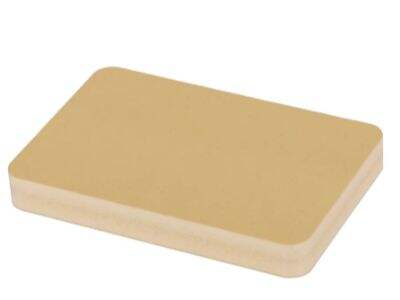그러니까, 프로젝트용 보드를 찾고 있나요? WPC와 PVC 보드에 대해 명확하지 않을 수 있습니다. 걱정 마세요! 지잉이 여러분을 안내해 드리겠습니다! WPC = 우드-플라스틱 컴포지트, PVC = 폴리염화비닐 두 종류의 보드는 모두 건축업자와 주택 소유자들 사이에서 널리 사용됩니다. 그러나 각각 다른 특징과 장점들이 있어 프로젝트에서 어느 한쪽을 선택할지 결정하는 데 영향을 미칠 수 있습니다.
당신 에게 맞는 방법 은 무엇 입니까?
WPC와 PVC 보드 중 선택하는 것은 프로젝트에 적합한 옵션을 모른다면 어려울 수 있습니다. 결정하기 전에 각 보드의 특성, 단단함 및 무게 등을 고려해야 합니다. 모든 프로젝트는 독특하므로 어떤 용도로 사용할지에 따라 가장 적합한 보드가 달라질 것입니다. 지잉은 각 보드 유형의 장단점을 비교하며, 좋은 점과 나쁜 점을 상세히 설명하여 여러분이 프로젝트에 맞는 올바른 선택을 할 수 있도록 도와드립니다.
프로젝트용 WPC 및 PVC 보드의 장단점
야외 프로젝트에 사용할 친환경 재료를 찾고 있다면 WPC 보드가 완벽한 선택입니다. 그들의 강도와 천연 목재 같은 외관은 나무 섬유와 플라스틱의 혼합물에서 비롯됩니다. 그 이유 중 하나는 구조 때문인데, 이는 WPC 보드를 나쁜 날씨와 녹에 면역하게 만들며 야외 용도에 이상적입니다.
PVC 보드는 완전히 빈일로 만들어졌으며 합성 물질입니다. 몇 가지 장점이 있습니다: 가볍고, 관리하기 쉽고, 설치하기도 매우 간단합니다. 많은 사람들이 이를 선호하여 인기가 많습니다. 또한 물, 불, 벌레에 영향을 받지 않아 좋습니다! 그러나 PVC 보드는 WPC 보드보다 내구성이 덜하며 더 자연스럽게 보이지 않습니다. 또한 PVC 보드는 시간이 지남에 따라 햇빛과 열로부터 손상되기 쉬워 야외 프로젝트에는 적합하지 않습니다.
WPC 및 PVC 보드 제조 소개
WPC 보드는 특수 제조 공정을 통해 50%의 목재 섬유와 재활용 플라스틱으로 만들어집니다. 이 특수 공정은 실목의 외관을 모방하는 내구성 있고 환경 친화적인 보드를 생성합니다. WPC 보드는 또한 긁힘, 날씨 및 녹에 강해 다양한 프로젝트에 이상적인 선택입니다. 이들은 동일한 공정으로 제작됩니다.
PVC 보드는 비닐을 압연하여 시트 형태로 만듭니다. 이 성형 공정의 단점은 PVC 보드가 나무에 비해 상대적으로 가벼운 무게로도 강하지만, WPC 보드의 내구성을 따라가지 못한다는 것입니다. 두 종류의 보드 모두 장점이 있으며, 어떻게 만들어지는지를 이해하면 어느 부분이 귀하의 프로젝트에 더 적합한지 더 잘 판단할 수 있습니다.
비교: 어느 쪽이 더 나은 가치와 성능을 제공하나요?
프로젝트에 적합한 보드를 선택하는 것은 예산과 필요 사항에 따라 달라집니다. 일반적으로 WPC 보드는 PVC 보드보다 비싸지만, 날씨에 더 잘 견디고 수명이 길어요. 만약 수십 년 동안 자연 환경에 견딜 수 있는 내구성 있는 제품을 원하신다면, WPC 보드가 가장 좋은 선택일 것입니다.
반면, PVC 보드는 더 경제적이며 가볍고 사용하기 쉽습니다. 실내 프로젝트를 진행하면서 비용을 절약하려는 사람은 결국 PVC 보드를 선택할 수 있습니다. 그러나 PVC는 열이나 햇빛에 약해져서, 이는 실외 옵션을 고려할 때 단점이 될 수 있습니다.


